My new camera, a Canon SX70 ($549) arrived on Monday. I have been out birding twice in the past two days in both perfect light, and the low light of a northern winter morning as the sun tries to peak above the horizon. This review of the Canon SX70 will be the first of several reports. I will use this post as a “table of contents” and will ultimately link those additional reviews directly below in the bulleted list
Last update to this blog post: August 19, 2022
- Continuous Using JPG vs RAW
- Landscapes
- Macro Photography
- Night Photography / Long Exposure (Not possible for SX60 or SX70. Learn more.)
- SX60 vs SX70
- Topaz AI Sharpen Tool and the Canon SX70
- Zoom Test (optical 65x vs digital 130x)
- Zoom Test in windy conditions … 3 Snowy Owls
- Videos
- Other?
The first question one might ask is why purchase a “super zoom / bridge” camera? Would not a DSLR camera be better? The answer as often in life is … it depends. My Canon SX70 has a much smaller sensor than a DSLR, but also is a much more compact package than a DSLR with a long telephoto lens. My life is an active one which has included over 10,000 miles of self supported bicycle touring in North America with my wife, and closer to home I am always hiking into the back country in search of wildlife. Lugging a tripod, large and heavy telephoto lens and camera along on these activities is not practical. A super zoom camera allows me to enjoy the outdoors away from my car.
The next logical question might be, why not this kind of camera for everyone. My new Canon SX70 has a 65x optical zoom lens, which is a 1365 mm full sized 35 mm camera equivalent. My SX70 has a much smaller sensor than a DSLR, which means less sensor area to capture light. Photography is all about light capture. If one’s sensor can not capture as much light during a standard unit time, then one must increase the number of time units the shutter is open. For wildlife, specifically birding photography, long exposures mean blurry photographs. Thus, what is the desired trade-off between sensor size and zoom cameras for an outdoor enthusiast like me?
I had owned my previous camera, the Canon SX60, for a little over four years. It was wearing out after having taken thousands and thousands of images. I gave considerable thought to the question I posed in the previous paragraph. Super zoom cameras now exist with significantly more reach than my 65x optical zoom. If 65x is good, would not 100x be better? The answer is not necessarily. The additional reach comes with image degradation. The laws of physics mean there is a practical limit to how much light a zoom lens can put down upon a sensor per unit time as the reach of the zoom lens is increased. For me 65x is a nice cross between reach and image quality. On days with decent light which allows me to use lower ISO settings, the super zoom cameras perform well.
Before moving on to my personal results with the SX70, Canon is showing major support for this new platform. They have now released a new “Software Developer’s Kit” for their EOS DSLR’s and SX70 cameras. Thus, the SX70 is Canon’s only non DSLR with this support, which will allow developers to accomplish neat tasks via the API.
Enough of my preamble … how is my Canon SX70 performing? The answer is I am very pleased. Remember cameras are now more computers than mechanical devices. My new SX70 keeps the 65x optical zoom, but has a new sensor and operating system at its core compared to my old Canon. These facts have also resulted in an increase of 16 to 20.3 megapixels (25% increase) which allows me increased resolution for my resulting images (better cropping options).
For my first two birding outings, my camera was configured in this manner:
- Digital zoom turned off (can always crop in post production which is essentially digital zoom)
- Spot focus (I quickly found letting the Canon SX70 pick the focus point did not work well. The camera often picked perches, or even the sky as the primary focus point, and not the bird’s eyes)
- ISO max limited to 400 ISO.
- Use of a monopod to stabilize photographs
- Aperture or Shutter Priority, never Auto mode. For birds which were perched or in low motion situations I used Aperture Mode. When I wanted flight shots, I switched to Shutter Priority. The camera set the ISO setting in both situations up to a maximum of 400 ISO. To have a shorter exposure time for flight times, the camera would increase the ISO compared to Aperture Mode. Higher ISO means lesser image quality. However a blurred photograph of a bird on the wing is useless. I needed to let in more light. Increasing your ISO effectively increases the camera’s sensor sensitivity to light.
- Raw files turned off (allows one to take more images per second, and conserves battery power … useful in northern Minnesota where winters are cold)
- High Speed (14 frames per second) … Not Single Shot
Remember, you may click or press upon any image to view at full size and resolution. I was examining each of these photographs in this manner. I utilized minimal post processing. I tend to open image in “camera raw” (the jpf file, not the actual raw file). You may wish to read Tech Radar’s review of super zoom / bridge cameras.
First Birding Expedition: Snowy Owl and Red Tailed Hawk
The lighting conditions were near perfect. I started taking photographs 75 minutes before sunset, and continued right up till sundown. I was extremely happy with my new camera’s results. Here are the images I kept alomg with the photo settings. Believe it or not, the flghts shots of the Snowy Owl were about the 10th to 15th photographs I ever took with my new SX70. Here is one more curious fact. I found two Snowy Owls and the Red-Tailed Hawk hunting within 500 yards of each other late Monday afternoon. I was amazed that there was never a fight between the raptors over the winter hunting territory. I suspect that battle is coming as catching prey proves more difficult later in the winter.
Snowy Owl: Settings: ISO = 200; Aperture = 5.6, Shutter = 1/1000th of a second
Shutter Priority … I was poised and waiting for the take-off
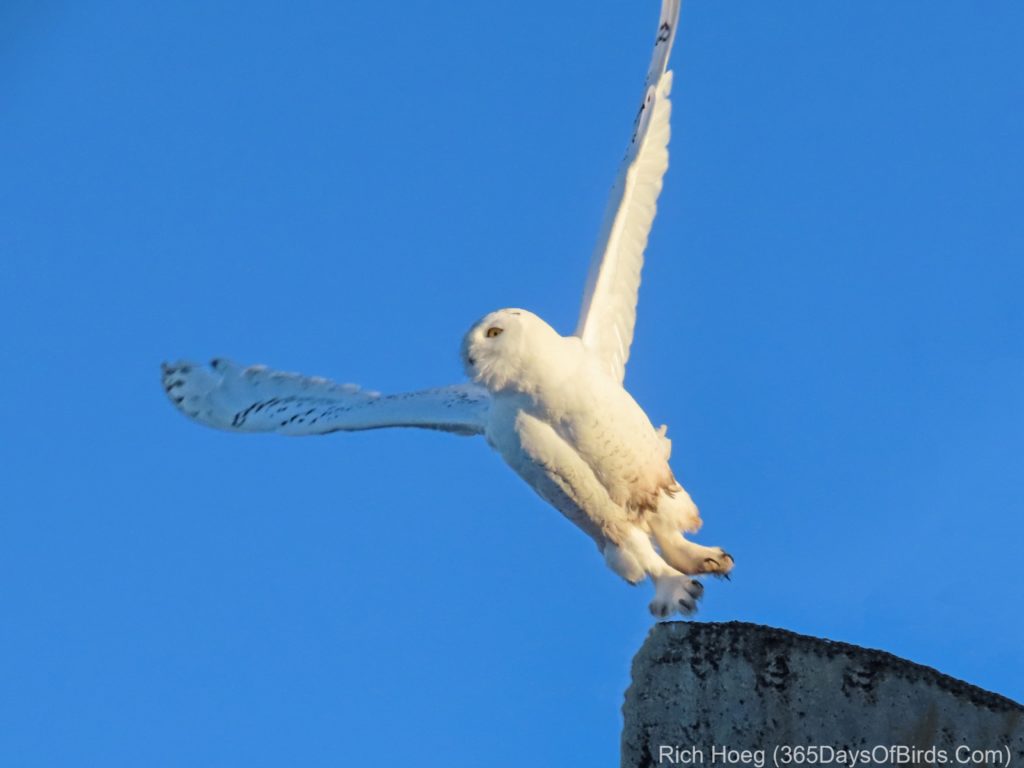
Snowy Owl: Settings: ISO = 200; Aperture = 5.6, Shutter = 1/1000th of a second
Shutter Priority
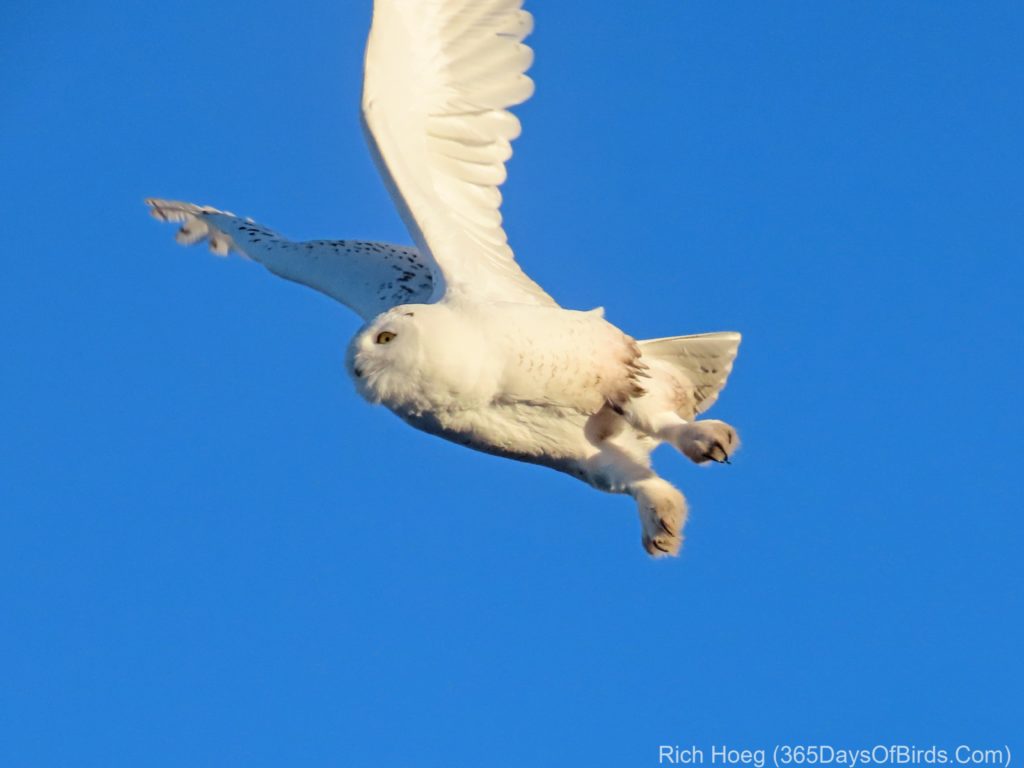
Snowy Owl: Settings: ISO = 100; Aperture = 5.6, Shutter = 1/640th of a second
Aperture Priority … fifteen minutes before sunset … beginning of golden sundown light
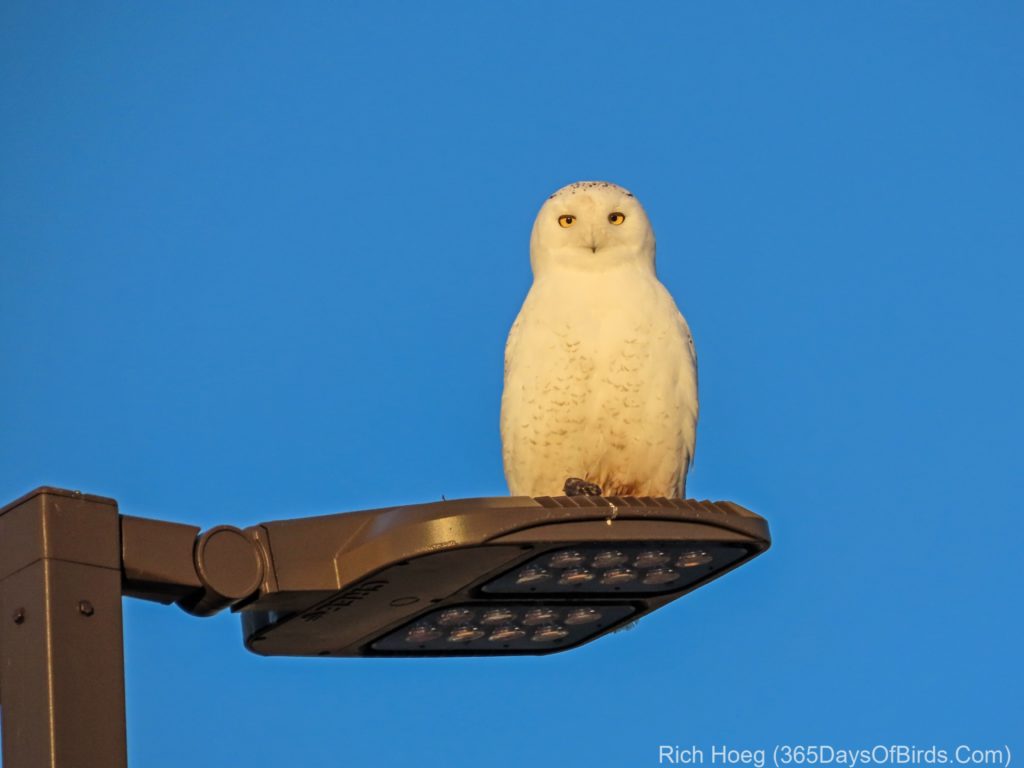
Snowy Owl: Settings: ISO = 125; Aperture = 5.6, Shutter = 1/320th of a second
Aperture Priority … minutes before sunset … golden sundown light
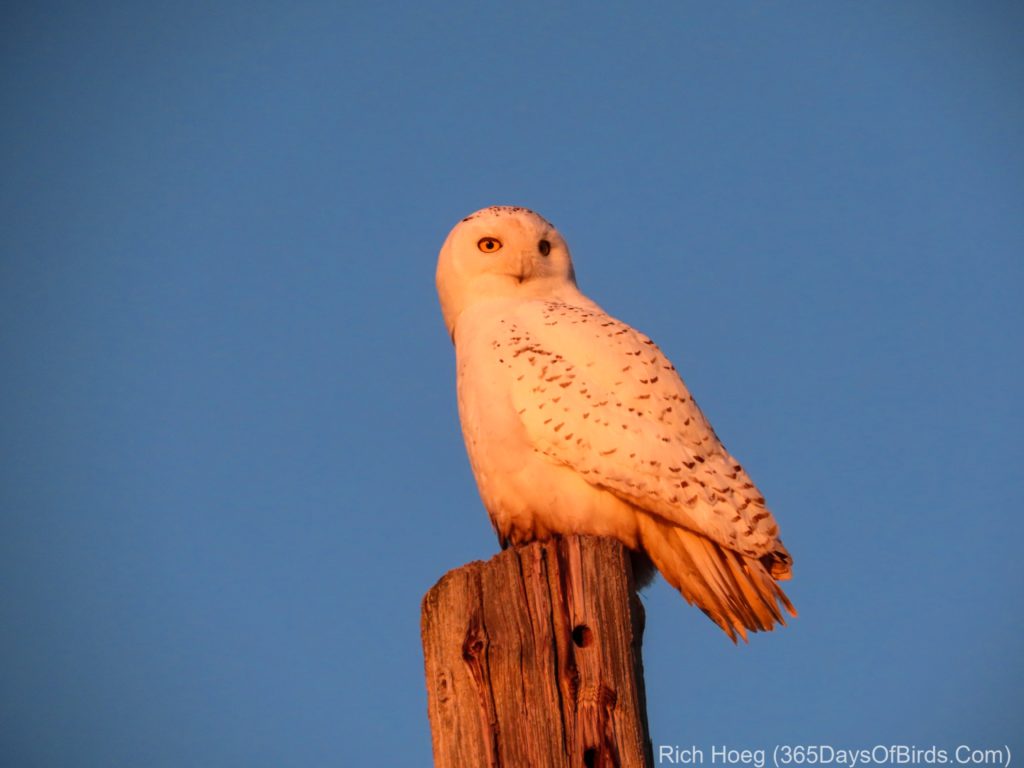
Red-Tailed Hawk: Settings: ISO = 100; Aperture = 6.3, Shutter = 1/500th of a second
Aperture Priority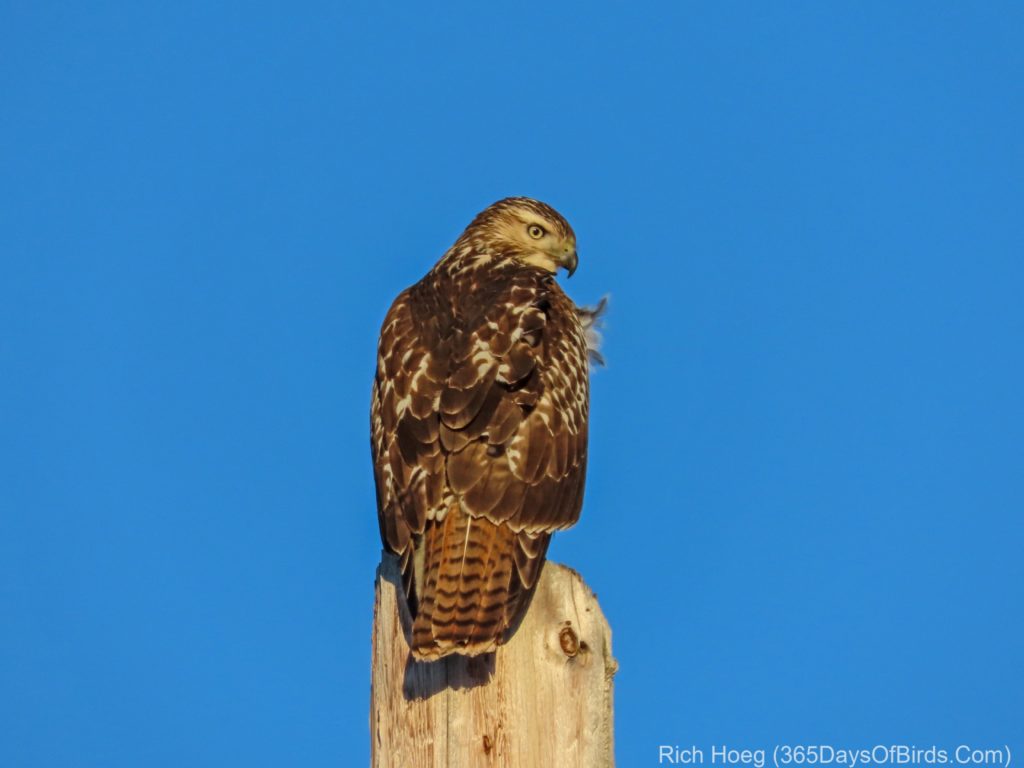
Second Birding Expedition: Spruce Grouse in the Superior National Forest
Unlike my outing with the Snowy Owls the prior evening, lighting was subdued. I found the Spruce Grouse just a few minutes after sunrise. Here in northern Minnesota, the sun does not get very high in the sky in mid December. Thus, from a practical vantage point, the sun was still down. I could not even see the golden orb through the trees, and although I had clear skies, the sun would not pop above the Boreal pines till almost 90 minutes after I photographed the grouse.
Once again, here are my images. Please note I quickly manually changed the ISO level to 800 ISO. This doubled the amount of light entering my camera. At the 400 ISO level the shutter speed was just too long. Please note I threw out 90% of my photographs for being blurry. An exposure setting of 1/60th a second is normally way to long for bird photography. However, I made my choice of settings knowing this in advance. The SX70 allows one to take 14 images per second. The beauty of digital photography is one does not mind taking significantly more images than needed to “get the shot”. I was quite pleased with the ISO 800 Spruce Grouse images.
Spruce Grouse: Settings: ISO = 400; Aperture = 5.6, Shutter = 1/30th of a second
Aperture Priority … this image was not crisp enough … I next increased the ISO to 800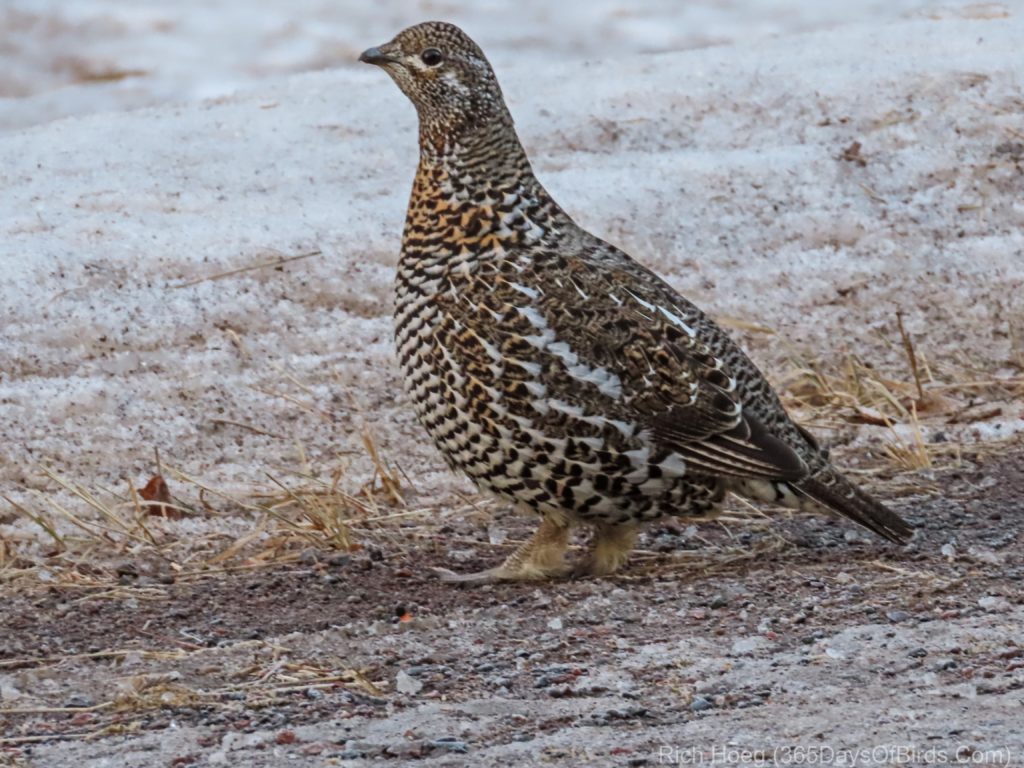
Spruce Grouse: Settings: ISO = 800; Aperture = 5.6, Shutter = 1/60th of a second
Aperture Priority … I was pleasantly surprised with the image quality at ISO 800, which also allowed me to halve the shutter time (i.e. twice as fast)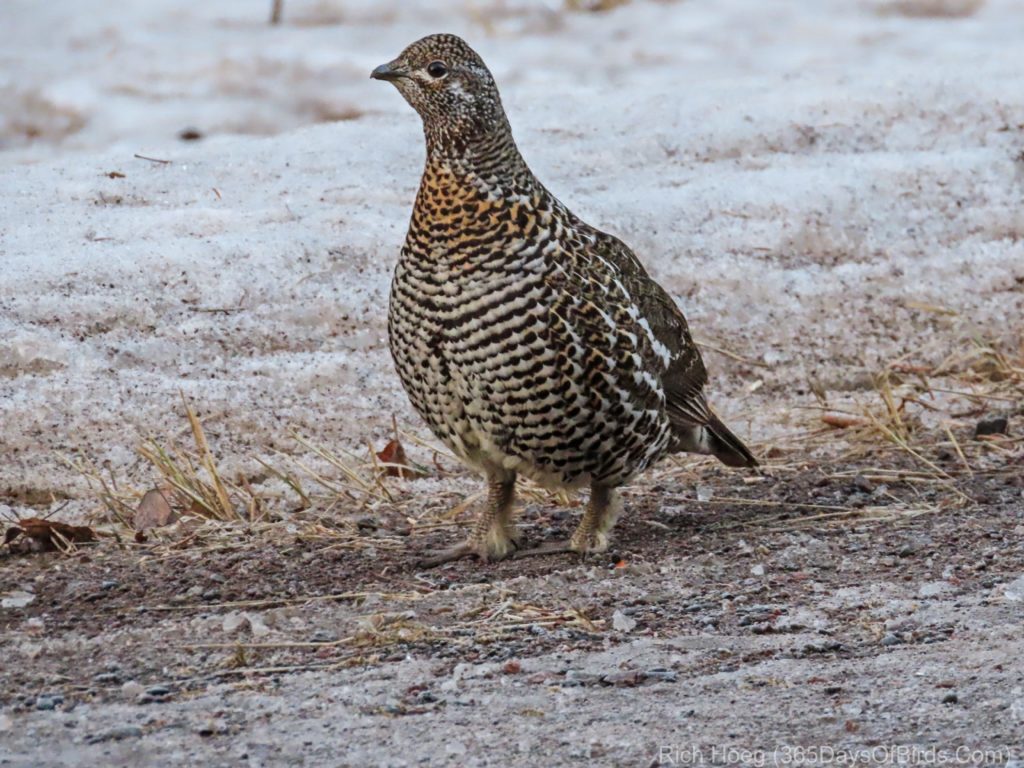
Spruce Grouse: Settings: ISO = 800; Aperture = 5.6, Shutter = 1/60th of a second
Aperture Priority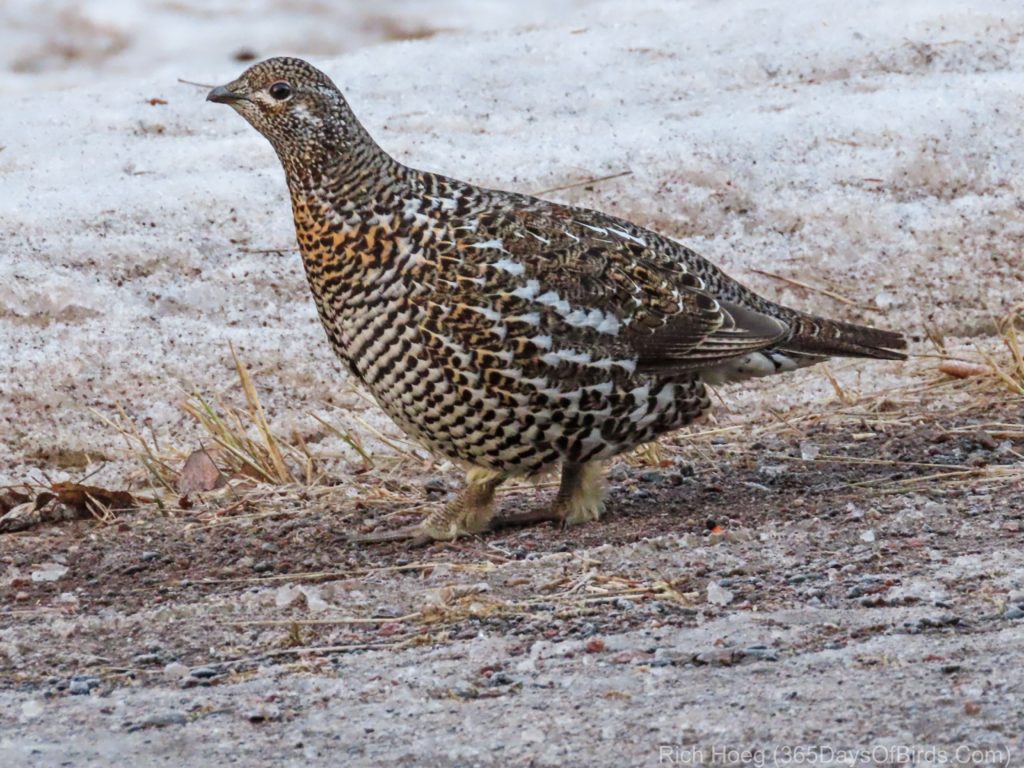
Camera Buttons and Controls
With respect to these items, all I can say is I have never met a camera menuing system I really liked. I don’t think Canon has any software usability experts on their staff. I can’t really say the menus are intuitive, but then I have the same complaint about my Sony A6000. With any new camera, one must just “grin and bear it”. Eventually one will learn where various menu commands reside.
I did take one landscape of sunrise over Greenwood Lake. As I knew the sky conditions would change fast, I do not consider my image a test. I did quickly force the ISO to 100, use a monopod and a 2 second delay for the image.
Conclusion: So far … so good. I like the Canon SX70. As noted I will be continuing this evaluation process. As with any zoom camera, it is good to understand the limitations of this genre of camera. However, this newer model compared to my old SX60 does seem to have better image quality … particularly in the low light arena (ISO 800 test).
Sunrise Over Greenwood Lake
Slight Zoom … ISO 100, Aperture 8.0, Exposure 1/40th of a second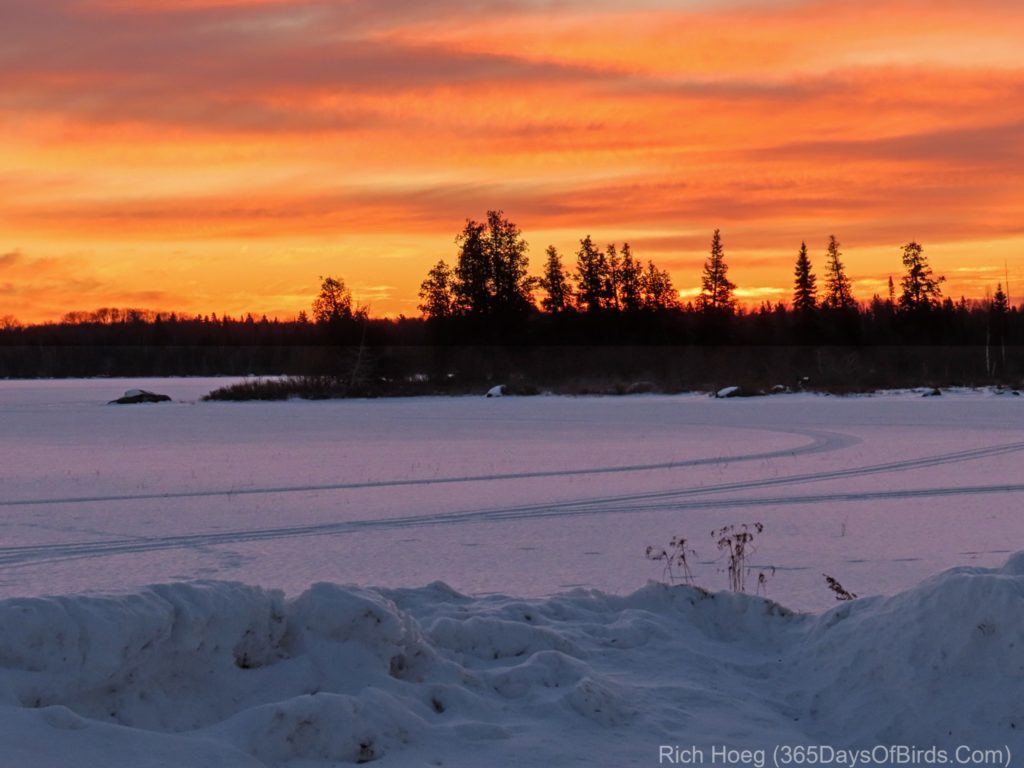
One more sunrise image, but taken with my Sony A6000 …
Two Harbors Highlands Railroad Tracks Sunrise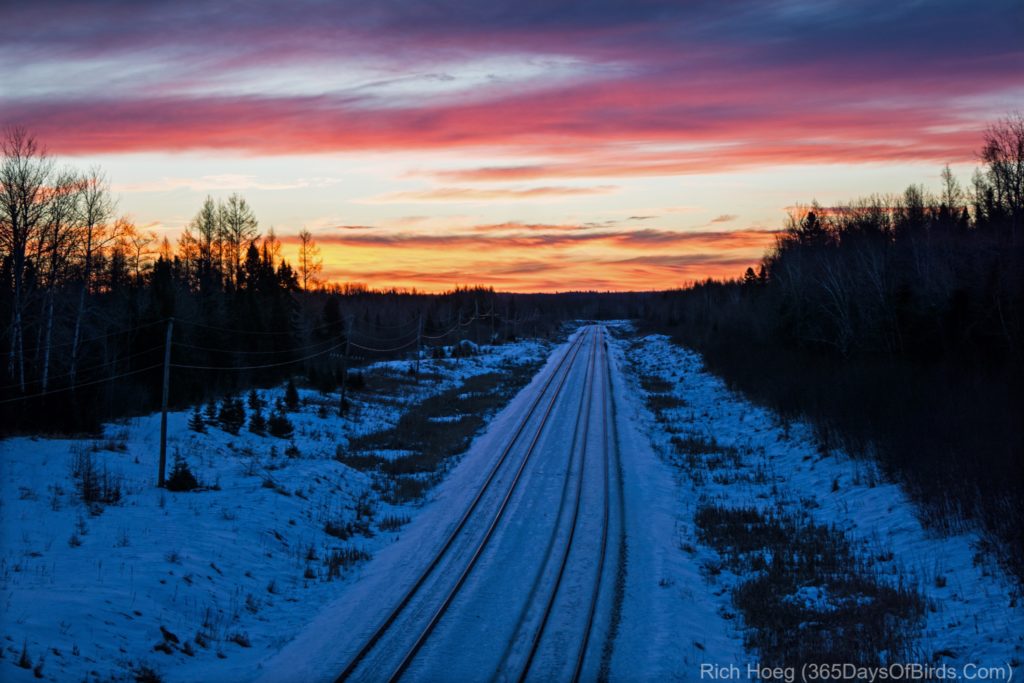
Auto-Focus Issue in extremely light reflective situations …
Added on January 26th
Two days ago I discovered an auto focusing issue which appears to happen in very bright light situations. In my case, while photographing a Snowy Owl, even though I had good light (extremely light clouds with reflective light off newly fallen snow). I was using Aperture Priority with the sun pretty much behind me. My ISO was set at 100, and the camera picked a 1/1500 shutter speed. I noticed that I was having difficulty getting a focus lock. At first I thought the issue was white on white (Snowy Owl on fresh snow). I did manage to get some good photos, but also a lot of garbage shots.
Later in the afternoon I visited a Bobcat den I have been watching. Once again I started to have focus lock issues (aperture priority once again). The combination of new snow, and a reflective shed wall was fooling my camera. This time I wondered if that was the case, switched to full manual … halved the shutter speed and kept the ISO at 100 and the aperture as low as possible. Immediately my auto focus problem was solved.
I now suspect that in any highly reflective high light situation I will need to make certain I am in full manual mode … no big deal for me, but for the more casual user it could ruin a lot of images (i.e. they will rarely use, if ever, manual mode). I expect in the summer while out on any of Minnesota’s 15,000 lakes the problem will reoccur. One again, for me it will be a non issue as I am now prepared.
Discover more from 365 Days of Birds
Subscribe to get the latest posts sent to your email.
Richard, I found your blog quite by accident and really enjoy your photos and stories. I’m researching a camera for bird watching and probably will purchase a “superzoom” model. I’ve narrowed it down to probably two extremes: Canon SX70 and Sony RX10 IV. Do you think the RX10 at 25x will work for bird watching? Or do I need a longer zoom like the SX70? Are any of your photos here taken at full optical zoom (65x)? Thanks
The Sony RX10 IV is an excellent camera, and the increased sensor size really helps to achieve higher quality. However if you intend to photograph birds in their natural environment, as opposed to a nature park where the birds are habituated to humans, I don’t believe a 25x optical zoom will be sufficient. I actually own a Sony A6300 with a lens which gives me almost the equivalent of a 25x optical zoom, and a rarely use if for birds. The only exception where I use my Sony, which has even a bigger sensor than the RX10 IV (thus … better quaility) is when I photograph owls in the winter. Most owls here in northern Minnesota will let one get very close. I keep hoping Sony will release a new “super zoom bridge” camera as I personally believe Sony makes the best camera systems. Given Sony manufactures the grand majority of sensors for ALL camera manufacturers this gives them a HUGE step up in overall system design. After all, camera are more computers than mechanical devices in this ere of digital photography. When I speak to a desire to see Sony release a new super zoom camera, I am talking about their DSC-HX400V series which is now very dated. I have been pleased with my SX70, but I also recognize its limitations.
I forget to respond to one aspect of your question, almost all of my recent Great Horned Owl Family photographs were taken with full zoom … 65x. I never use digital zoom … better to post process and crop a touch too get the desired view. In addition, most of my bird photographs were taken at full 65x zoom.
This is very informative information! The settings you have listed with each picture is very helpful. Thank you. I have just received my canon SX70 a week ago. I plan to go on an outing soon (birding). My question is in regards to the Power Off. It is ( by default) set to turn off at 1 minute. Should I disable it for the outing or will it pull too much power and deplete the battery too soon? thanks for any advise.
Janet: I have the battery to last quite a long time. I do not have my Sx-70 power off automatically, and I often take 500 images per outing. I do let the screen go dark after a minute.
I am a birder, and I just purchased an SX70 camera, so I found this article very helpful. I am also planning to buy a monopod with a ball head. Do you have any recommendations for a monopod and head? Thank you.
Kathryn: I do not use a fancy monopod, just the Amazon Basics models which is under $20. While it does not have a ball head, it fits my purposes and I do not worry about bringing it on my bike tours. It will be strapped to my bicycle as I tour Norway up in the Arctic next month!
Rich
Thank you for your comments on your monopod use. Enjoy your upcoming trip!
I had a SX60HS and it was a very capable camera. The small sensor rears its ugly head on long reaches. Don’t even think about digital zoom unless you have a tripod and shutter release. The long shots always have that watercolor effect if you pixel peep. I recently gave it away to someone starting out. As I told him, it’s not the gear but the photographer. I tell you what, the SX60HS had the best program auto mode I ever seen. And increasing ISO doesn’t bring more light into the sensor. All it does is increase frequency or gain faster shutter speeds. The small sensor kind of craps out at anything higher than 800 ISO or it did on the SX60HS. I suppose you could push it to 1600 for Instagram or Facebook stuff.
Thanks for review. I am contemplating this camera or the new Nikon coolpix 1000. The 1000 is much heavier (and more money)and perhaps its 3000x zoom is more than really needed. The p900 lacks the 4k video but has more reach than the canon with 83x or 2000x zoom. I would think a monopod would be necessary for anything past 1000x.
I am thinking the sx70hs and save some money to put towards a lens for my dslr.
Any helpful comments would be appreciated to help me make a decision.
Rob et al: I can not speak to Nikon super zoom cameras because I have never used their bridge cameras. However, no matter the manufacturer, as one increases the optical zoom and then puts down the image on a small sensor, image quality will increasingly suffer. At times I have actually considered purchasing a Sony RX bridge camera to increase the sensor size, but this meant lessening the optical zoom. Assuming folks are interedted in birding photography, the real key is getting good at understanding habitat and getting oneself in the position to take a photograph. The 65x optical zoom on the Canon seems to be the optimal tradeoff for me … less zoom and I am not able to get small birds to be large enough in my photos w/o excessive cropping … more zoom and it has been difficult to steady the camera on a desired subject that is so far in the distance (monopod or not). I use my Canon with digital zoom (130x) turned off. When I have tried to take photos, always using a monopod, I don’t like the end result.
The other item to remember, as one increases the zoom, lighting better be fantastic to allow very short shutter speeds. If I am using a 1/800 shutter speed for a 65x optical zoom, whether twice that amount uses digital or optical zoom, to maintain any chance at a crisp clean photograph, you will need to halve,the shutter speed (i.e. 1/1600th of a second). Given the number of cloud days in Minnesota, I would either have to increase my iso setting with corresponding image quality loss, or give up.
Hope some of these comments help. If one is not taking wildlife photos, I personally see no reason for monster zoom lenses.
I have a question Richard. I worry with a bridge camera and shooting birds that I’m not going to be able to get the clarity I want. Roy has a 500mm lens on a crop body camera which is approximately a 750mm. We just saw that Sony has a new Cyber-shot DSC-RX10 IV Digital Camera. It would be good for me because I can’t carry (like you) a lot. But because birds move so much I can’t imagine getting publishable images. Do you find you are frustrated with quality when it comes to smaller birds. You know we like to see their feathers if given the opportunity.
Carol: I really like the Sony Rx10 series of camera, but I feel their reach in terms of zoom lenses is not sufficient. Obviously the larger sensor is an advantage, but without a larger optical zoom I would never purchase any camera in that series for birding photography. I have been hoping Sony would update their super zoom / bridge camera (Sony Cyber-shot HX400V) which is now 4+ years old, but that does not appear to be their focus.
Thanks for the review. The SX70 looks like a winner for a small sensor superzoom.
Thanks for posting this review and I look forward to additional reports. I have the SX60 along with a Canon T6i and the image quality is much improved with the T6i. The only thing is with the Tamron 150-600 on the T6i it is a beast to carry with my monopod. It looks like the small sensor of the SX70 still has a challenge dealing with the white of the Snowy Owl but does great with the darker grouse. I will be waiting on your report regarding how fast the SX70 is able to focus compared to the SX60.
Have you been able to do any side by side comparison between the SX60 and SX70 on stationary objects at full optical zoom, to simulate a bird on a post? If so, is there any improvement in photo image quality between the SX60 and SX70?
I ask as an SX50 user who purchased two SX60’s and returned them both because the SX50 simply had better image quality at maximum optical zoom than did the SX60.
John: I plan to do exactly that kind of comparison. Sometime in the next few weeks, I will add that evaluation.
Great. Thanks very much.
For instance, when I purchased a teleconvertor for my Sony A6000 … I did this side by side test. My plan is to take photographs of birds at the same time, at the same approximate distance (birds move around a bit!), and under the same conditions. Stay tuned.
https://www.365daysofbirds.com/2017/02/02/extending-the-telephoto-reach-of-your-sony-a6000-a6300-a65000/
A myth as far as I’ve seen. The problem here is that reviewers and users alike are comparing “maximum”, not equal zooms. The SX60 zooms significantly further. I have yet to see a valid and proper comparison between the two.
Damian: Make certain you take a look at my SX70 vs SX60 post. The focal lengths are almost identical.
Thanks for this review. I purchased a small super zoom like this last year (can’t recall which one) and returned it because the images were too soft for my liking. Looks like you’re getting better images than I did. I may have to check this camera out. I do get tired of lugging my full-frame Canon and 150-600mm Sigma lens all over the place… very heavy outfit!
Thanks to everyone for the kind comments. Be aware of two items I mentioned in the post, which I think are very important to success with a super zoom camera: 1. Use a monopod to stabilize your camera 2. Limit your upper bound ISO. Finally, burst mode means one can throw away lots of images. Take 10 photos to get one very good image.
Thank you for the beautiful bird and landscape photos with your
new camera.
Gudrun
Richard, I so appreciate your sharing your wonderful pictures with all of us. Thank you once again.